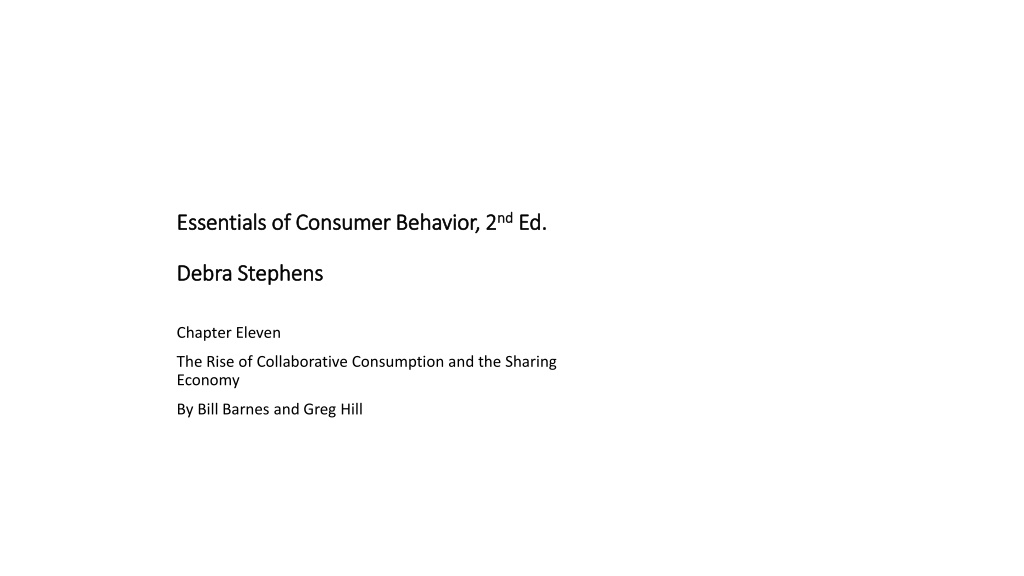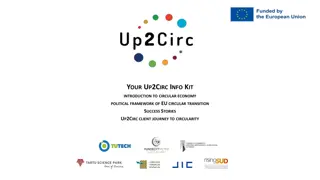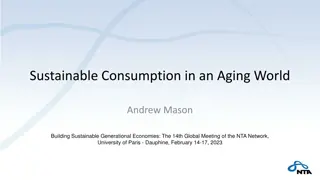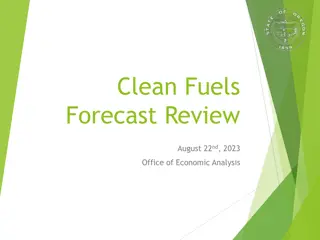The Rise of Collaborative Consumption in Today's Economy
Explore the evolution of consumer behavior with a focus on collaborative consumption and the sharing economy. Understand the unique benefits offered by platforms like Uber, Airbnb, and Kickstarter compared to traditional services. Learn how collaborative consumption is reshaping market behaviors and fostering a culture of sharing and efficiency.
Download Presentation

Please find below an Image/Link to download the presentation.
The content on the website is provided AS IS for your information and personal use only. It may not be sold, licensed, or shared on other websites without obtaining consent from the author.If you encounter any issues during the download, it is possible that the publisher has removed the file from their server.
You are allowed to download the files provided on this website for personal or commercial use, subject to the condition that they are used lawfully. All files are the property of their respective owners.
The content on the website is provided AS IS for your information and personal use only. It may not be sold, licensed, or shared on other websites without obtaining consent from the author.
E N D
Presentation Transcript
Essentials of Consumer Behavior, 2 Essentials of Consumer Behavior, 2nd ndEd. Ed. Debra Stephens Debra Stephens Chapter Eleven The Rise of Collaborative Consumption and the Sharing Economy By Bill Barnes and Greg Hill
In small groups, compare and contrast the following, based on the unique consumer benefits each provides: Hertz vs Uber vs Zipcar Redbox vs Netflix vs in-theater movie Kickstarter vs money from venture capitalist or friends/family AirBnB vs Marriott eBay vs Craigslist vs Buffalo Exchange (thrift store in Portland, OR) How are traditional and collaborative consumption different?
Collaborative Consumption: Systems that reinvent traditional market behaviors renting, lending, swapping, sharing, bartering, gifting in ways and on a scale not possible before the internet. Sharing Economy: Systems that facilitate the sharing of underused assets or services, for free or for a fee, directly between individuals or organizations. Definitions s The sharing economy is estimated to grow from $14 billion in 2014 to $335 billion by 2025. This estimate is based on the rapid growth of Uber and Airbnb as indicative.
Collaborative Consumption Product-service systems: Easy access to the benefit of a product (the service) is provided through peer-to-peer or business to consumer marketplaces. Redistribution markets: Underutilized, pre-owned goods are redistributed. Collaborative lifestyles: Non product assets like space, skills, and money are exchanged in new ways.
Product-service systems Half of U.S. households own power drills, but most are used for only 6 to 13 minutes during their lifetime. Zilok.com offers peer-to-peer daily rental of tools Redistribution markets Examples of Increased Efficiency Americans discard 7 million tons of cardboard annually. UsedCardboardBoxes.com rescues and resells boxes to movers. Collaborative lifestyles Millions of houses and spare rooms around the world are sitting empty and have idling capacity . AirBnB.com, the Match.com for travel, allows anyone from private residents to commercial property owners to rent out their extra space.
Examples of the Peer-to- Peer Sharing Economy ECONOMIC SECTORS OF THE SHARING ECONOMY Sectors of activity Examples of businesses/platforms Transport Uber, Lyft, BlaBlaCar, Click&Boat Tourism and hotel industry Airbnb, CouchSurfing, HomeExchange Food ShareTheMeal Financial sector KickStarter, Funding Circle Services TaskRabbit, WeTasker


























